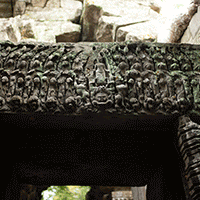KIRTI explores contemporary art from Southeast Asia in alternative ways. This effort is vital as a countermeasure to art world silos and stratifications.
Why : Art from Southeast Asian is underrepresented globally. Regional institutions often operate within political and creative constraints. Regional platforms often have limited reach and/or scope. Art is typically siloed by country, discipline, generation. Barriers of all kinds -- language, funding, sanction -- inhibit local art scenes.
Methodology : KIRTI works via an intuitive, on-the-ground methodology, deliberately seeking out artists and thinkers from across disciplines and generations. This is accomplished primarily through introductions from artists to fellow artists. Art scenes develop implicit hierarchies and factions. By adopting an informal, semi-randomized approach based around meeting people, KIRTI organically works across boundaries, which ultimately leads to a more diverse set of featured artists.
Content : There is no prescriptive rubric for the content featured in KIRTI. Artists are invited to share artworks, process, unrealized projects, or anything else they feel called to.
What is “KIRTI:" An iconographic motif found above the doorways of temples across South and Southeast Asia. The story goes that the god Shiva creates a demon of terrible appetite, with bulging eyes and unhinged jaw. But no sooner than creating the demon, Shiva orders it to eat itself. Obediently, the demon chews from its toes until only its floating head remains. Shiva is amazed. He saw in this monstrous self-consuming energy the perfect embodiment of life itself. Shiva declared the demon Kirti-Mukha – “glorious face” – and orders that it mark the threshold to his temples. As Shaivism expands from South Asia into Southeast Asia, the Kirti-Mukha image inevitably is transformed with new names and myths. For the Khmers, it became Rahu, the demon who eats the moon; for the Javanese, it became Batara Kala, lord of the underworld; for the Buddhist kings that co-opt Hindu temples, it became Kala, or Yama, incarnation of all-consuming time. Eventually, it was imported back into South Asia, changed in myth and aspect. Even now the face transforms.
